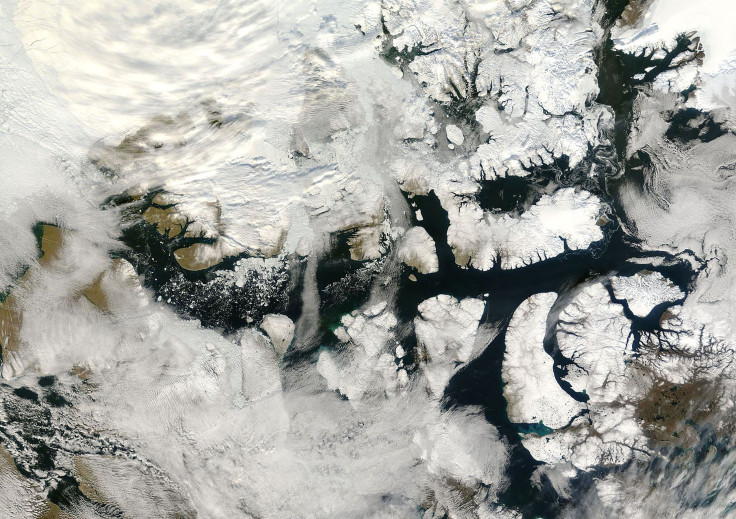Cruise Ship Pollution: Cruise Sewage And Air Pollution A Rising Concern As Ships Sail Toward Northwest Passage

When the first luxury cruise ships begin traversing the Northwest Passage, a route newly opened by melting Arctic ice, the colossal vessels may also bring sooty diesel emissions and swimming pools of sewage into a long-pristine environment, green groups warn.
A new report on the global cruise line industry found that these companies are slow to adopt technologies and practices that could reduce harmful fuel emissions and limit water pollution in the areas where they travel and dock. Friends of the Earth, an environmental activist group, graded 17 cruise companies and their 171 ships and concluded that the industry has shown an “ongoing lack of initiative” to address the cruise liners’ environmental impacts.
Pollution concerns have long plagued cruise ships on traditional routes like the U.S. coasts, the Caribbean Sea, the Mediterranean and Europe’s North Sea. But the Northwest Passage — a sea route in the Arctic Ocean that connects the northern Atlantic and Pacific oceans — was largely spared thanks to its frozen expanse.
Now that global warming has forced a retreat of the polar ice cap, however, the passage is newly navigable for several months of the year. Last August, the surface area of ice covering the Arctic Circle was 30 percent less than it was 25 years ago, the National Snow and Ice Data Center said.
“With the Northwest Passage now open in the summer due to climate change, the cruise industry’s expanding itineraries will bring increasingly damaging pollution to even more sensitive areas like the Arctic,” Marcie Keever, oceans and vessels program director for Friends of the Earth, said in a statement Thursday.
Cruise Lines International Association, the industry’s main trade group, dismissed the report Thursday as “misleading and inaccurate.” In an email, the group said Friends of the Earth does not account for recent improvements in environmental performance or consider the industry’s $1 billion worth of investments in new technologies and cleaner fuels.
The average cruise ship, which carries around 3,000 passengers and crew members, produces about 21,000 gallons of sewage every day — enough to fill 10 backyard swimming pools in a week, the U.S. Environmental Protection Agency estimated in 2008. The average ship also emits the same amount of sulfur dioxide as 13.1 million cars, and as much soot as 1.06 million cars, according to the EPA. Exposure to sulfur dioxide can cause asthma attacks and exacerbate or cause other lung- and heart-related complications.
Cruise ships could start traversing the Northwest Passage later this summer. Crystal Cruises LLC, a Los Angeles-based operator, said it will send the first luxury cruise ship through the Arctic sea route in mid-August. The “unprecedented adventure” from Anchorage to New York, which is sold out, will last 32 days and cost about $22,000 or more per person.
The company’s 820-foot-long, 13-deck Serenity cruise ship will be the first large-scale cruise liner carrying tourists through the passage, and it will be the largest ship that maritime officials can recall attempting the northern voyage, Wall Street Journal reported in May.

Yet Crystal Cruises received an overall score of “F” in the report card released Thursday. Friends of the Earth said the company flunked the categories for sewage treatment, air pollution reduction and transparency, while information on water quality compliance was not available. Three others among the 17 companies received failing scores: Costa Cruises, P&O Cruises and MSC Cruises.
Crystal Cruises was not immediately available for comment. On its website, the company said it had “gone to great lengths” to ensure its inaugural Northwest Passage expedition affords “careful respect of the remote communities we will be visiting.”
The California company is a member of Cruise Lines International Association. The industry group said by email that all its members must process sewage through treatment systems that comply with or exceed international requirements before discharging the waste. Regarding air pollution, the association said the industry is at the forefront of developing and deploying clean fuel and emissions-reduction technologies to ensure cruise ships are energy efficient and low-emitting.
Friends of the Earth’s report card did concede one bright spot for the cruise line industry. Disney Cruise Line scored an overall “A-” after receiving As for sewage treatment, water quality compliance and transparency and a C- for air pollution reduction, an improvement on the cruise line’s score in the last report from 2014.
Keever said the organization hoped its survey would further pressure the Environmental Protection Agency and international maritime regulators to enforce stronger standards for sewage and air pollution from cruise ships. “It’s way past time to set a higher bar for this dirty industry,” Keever said.
© Copyright IBTimes 2025. All rights reserved.





















